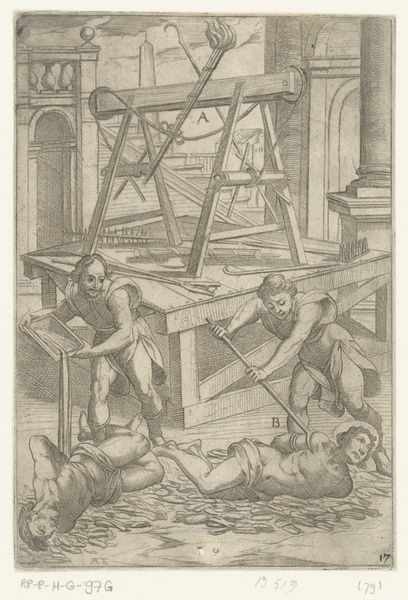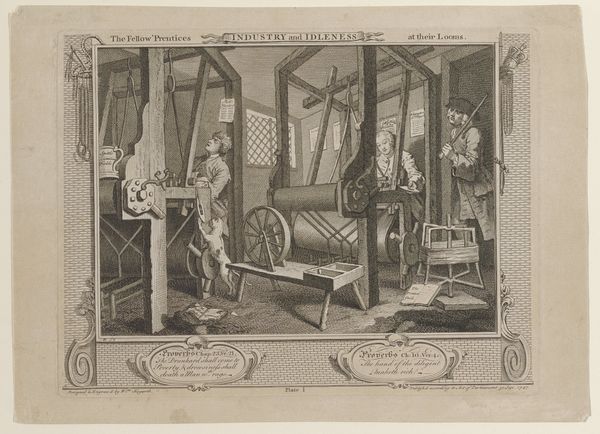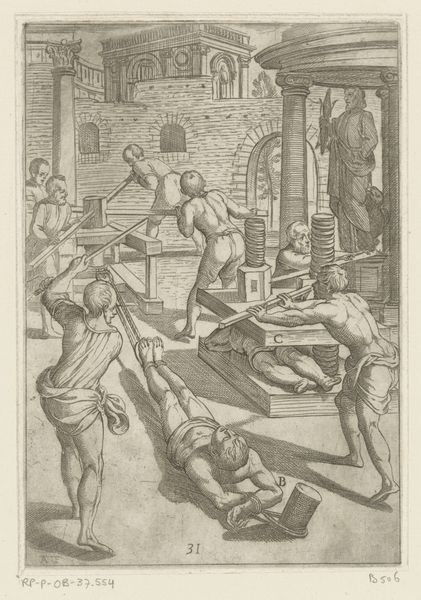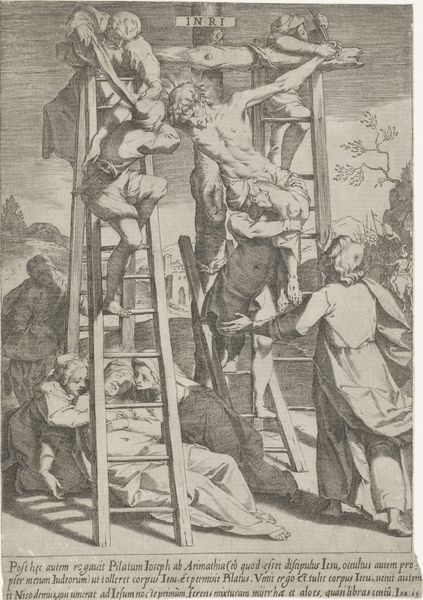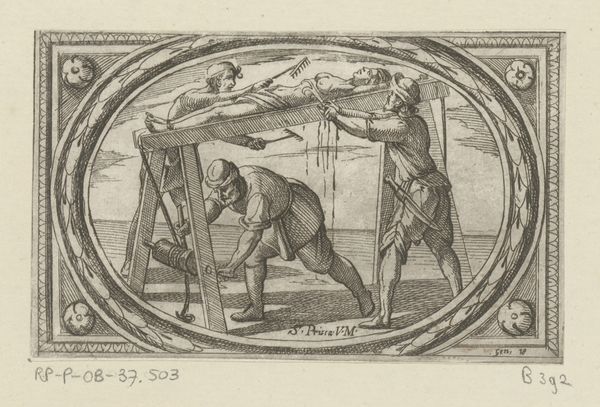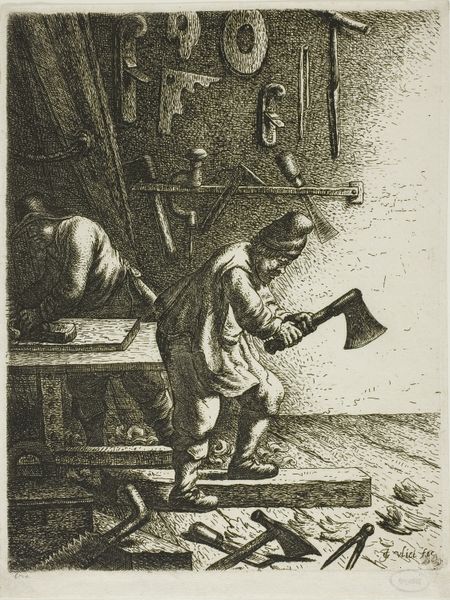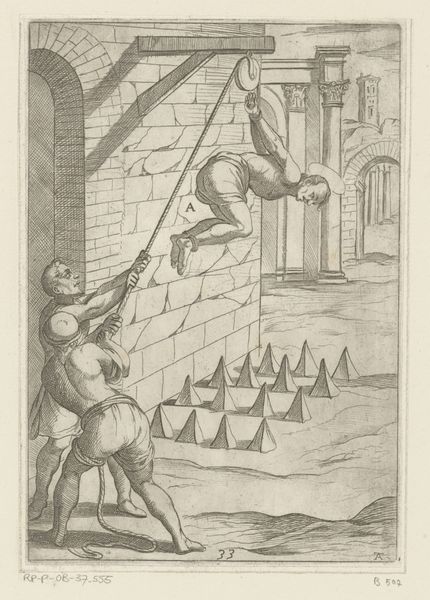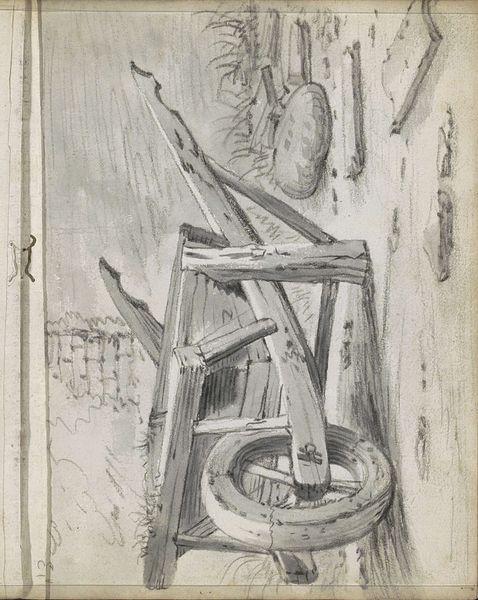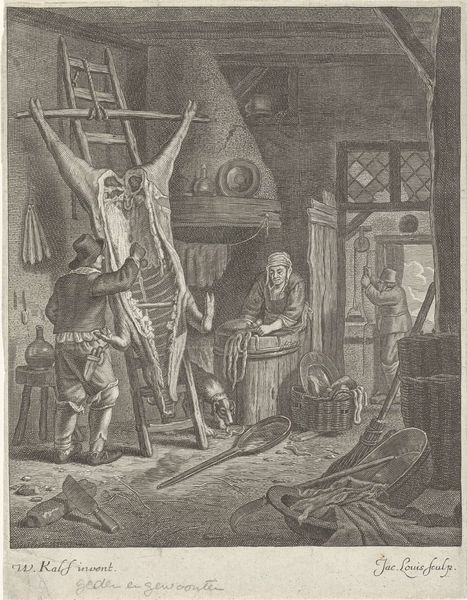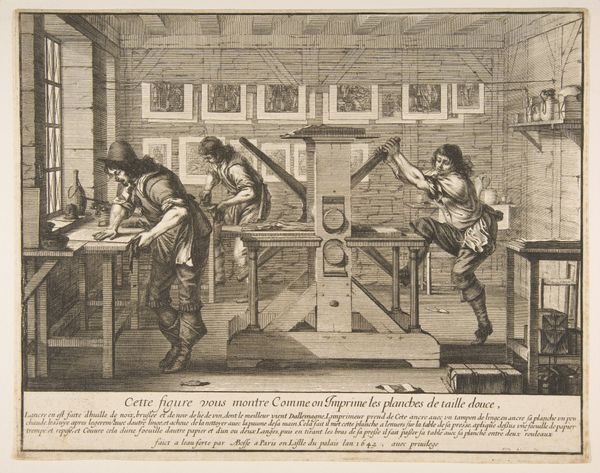
drawing, print, ink, engraving
#
drawing
# print
#
old engraving style
#
mannerism
#
figuration
#
11_renaissance
#
ink
#
history-painting
#
engraving
Dimensions: height 194 mm, width 133 mm
Copyright: Rijks Museum: Open Domain
Editor: We're looking at "Foltering: dubbele rek," or "Torture: Double Rack," an engraving by Antonio Tempesta, made sometime between 1565 and 1630. It depicts, quite brutally, two figures being tortured on what appear to be wooden racks. It's incredibly graphic, almost clinical in its depiction of suffering. What strikes you about this piece? Curator: This print offers a stark window into the social and political landscape of early modern Europe. The depiction of torture was not uncommon in art of this period, serving as a form of visual propaganda, reminding the populace of the state's power and the consequences of disobedience. How does the architectural setting play into this reading, do you think? Editor: I hadn’t considered that! The imposing building in the background certainly adds to that sense of overwhelming power. Almost like torture is an institutional practice, normalized within this society. The detail is also incredible: The men look completely detached, perhaps even bored. It suggests the state, almost callously indifferent to human suffering, what does that commentary highlight in contrast to more contemporary standards of acceptable civic behaviours and decorum? Curator: Exactly! And that contrast is key. Public executions and displays of torture were common occurrences. This print, by circulating images of state-sanctioned violence, both reflected and reinforced those power dynamics. We need to think about what this print *does,* not just what it depicts. Was it intended to deter dissent? To celebrate the power of the law? Who was the intended audience? Editor: So, it’s less about the individual agony and more about the broader message being sent by the institutions of power. Seeing the setting, like you mentioned, alongside the lack of strong reaction from the enforcers. It paints a portrait of justice not being seen, but inflicted onto a public without recourse, that might even endorse its practice. That's definitely shifted my perspective! Thanks! Curator: Precisely. Thinking about prints like this compels us to examine how institutions use visual media to shape public opinion and maintain control. There is still a reflection in our time to explore there, too. I’m glad we could highlight new perspectives, that might inspire viewers!
Comments
No comments
Be the first to comment and join the conversation on the ultimate creative platform.
